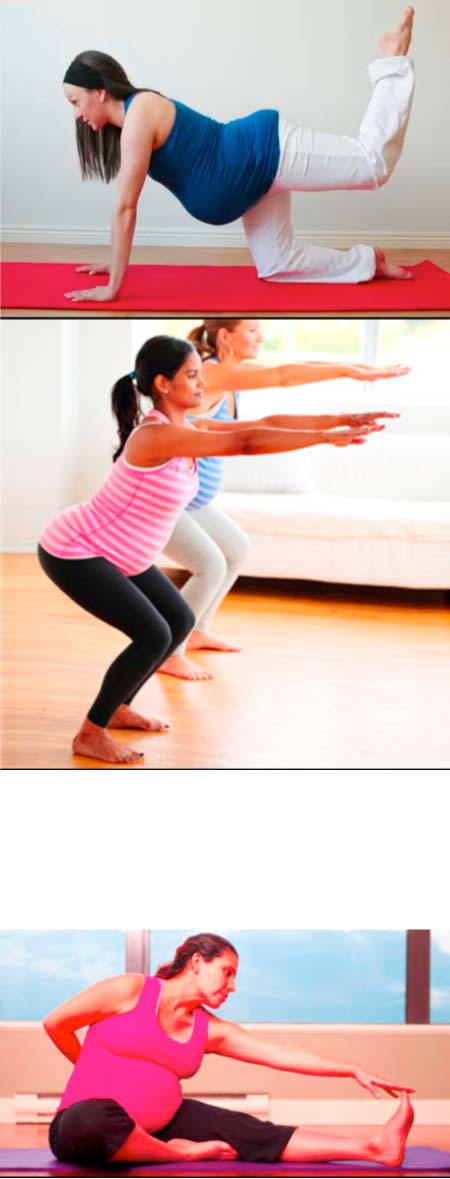
Maintaining
a regular exercise routine throughout your pregnancy can help you stay healthy
and feel your best.
It can also improve your posture and decrease
some common discomforts like backaches and fatigue.
There
is evidence that it may prevent gestational diabetes (diabetes that develops
during pregnancy), relieve stress, and build more stamina needed for labour and
delivery.
If
you were physically active before your pregnancy, you should be able to
continue your activity with modifications as necessary.
You
can exercise at your former level as long as you are comfortable and have your
doctor’s approval.
If
you have never exercised regularly before, you can safely begin an exercise
programme during pregnancy after consulting with your health care provider.
Do not try a new, strenuous activity. Walking
and swimming are considered safe to initiate when pregnant.
Exercise
during pregnancy does wonders. It boosts mood, improves sleep, and reduces
aches and pains. It also prepares you for childbirth by strengthening muscles
and building endurance, and makes it much easier to get back in shape after
your baby is born.
Research
suggests that prenatal exercise may also lower the risk of developing
gestational diabetes and preeclampsia. If you’ve been diagnosed with
gestational diabetes, exercise can help you manage the condition and prevent
complications.
There
are usually many questions that come to mind when planning how to exercise
during pregnancy. Physical exercise is bodily activity that improves or
maintains physical fitness and overall health and wellness.
This type of exercise during pregnancy is
important and can help with some common discomforts of pregnancy and even help
prepare your body for labor and delivery.
Wear
loose-fitting, breathable clothing. Dress in layers so it’s easy to peel off a
layer or two after you’ve warmed up or if you get overheated. Make sure your
maternity bra is supportive enough, and choose athletic shoes that fit
properly.
If
your shoe size has changed because of mild swelling, stash away your
pre-pregnancy sneakers and buy a new pair. You may want to swap out the liners
they came with for gel liners that provide better shock absorption.
Overall
and in most cases, exercise is safe during pregnancy. You will usually find it
is even recommended. Typically, the first rule of thumb is if you were
physically active before you were pregnant, it is likely safe to remain active
during pregnancy. More than likely, your healthcare provider will tell you to
remain active, as long as it is comfortable and there are no other health
conditions suggesting otherwise.
For
most pregnant women, at least 30 minutes of moderate exercise is recommended on
most, if not all, days of the week.
Walking
is a great exercise for beginners. It provides moderate aerobic conditioning
with minimal stress on your joints. Other good choices include swimming,
low-impact aerobics and cycling on a stationary bike. Strength training is OK,
too, as long as you stick to relatively low weights.
Remember
to warm up, stretch and cool down. Drink plenty of fluids to stay hydrated, and
be careful to avoid overheating.
Intense
exercise increases oxygen and blood flow to the muscles and away from your
uterus. In general, you should be able to carry on a conversation while you’re
exercising.
Warming
up prepares your muscles and joints for exercise and increases your heart rate
slowly. If you skip the warm-up and jump into strenuous activity before your
body is ready, you could strain your muscles and ligaments and have more aches
and pains after your workout.
A
good way to warm up is to start your chosen activity at a low intensity and
slowly increase it during the first five to eight minutes. This prepares the
muscles you’ll be using for more vigorous movement.
For
example, if your workout is walking, go slowly for the first few minutes and gradually
pick up the pace.
Read Other Articles In Article (Archive)

US Embassy, AmCham conduct entrepreneurship training for Gambian youth
Apr 4, 2014, 9:47 AM



